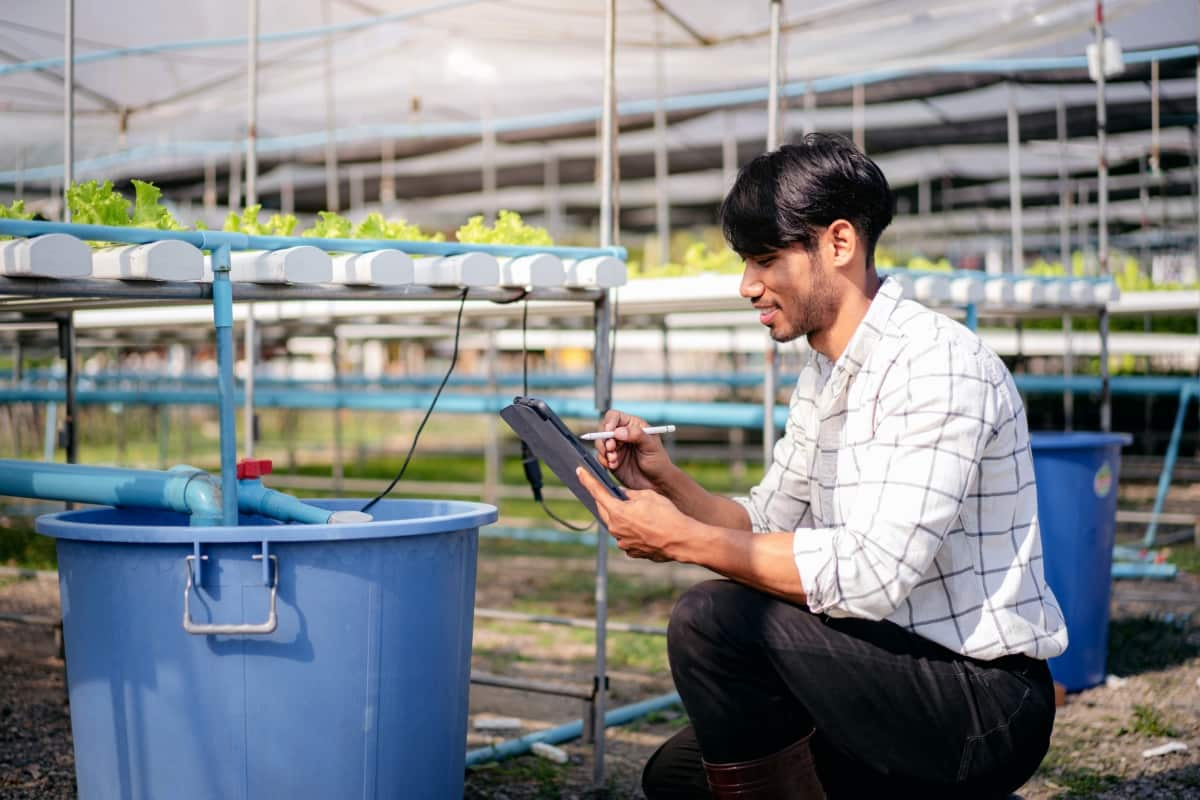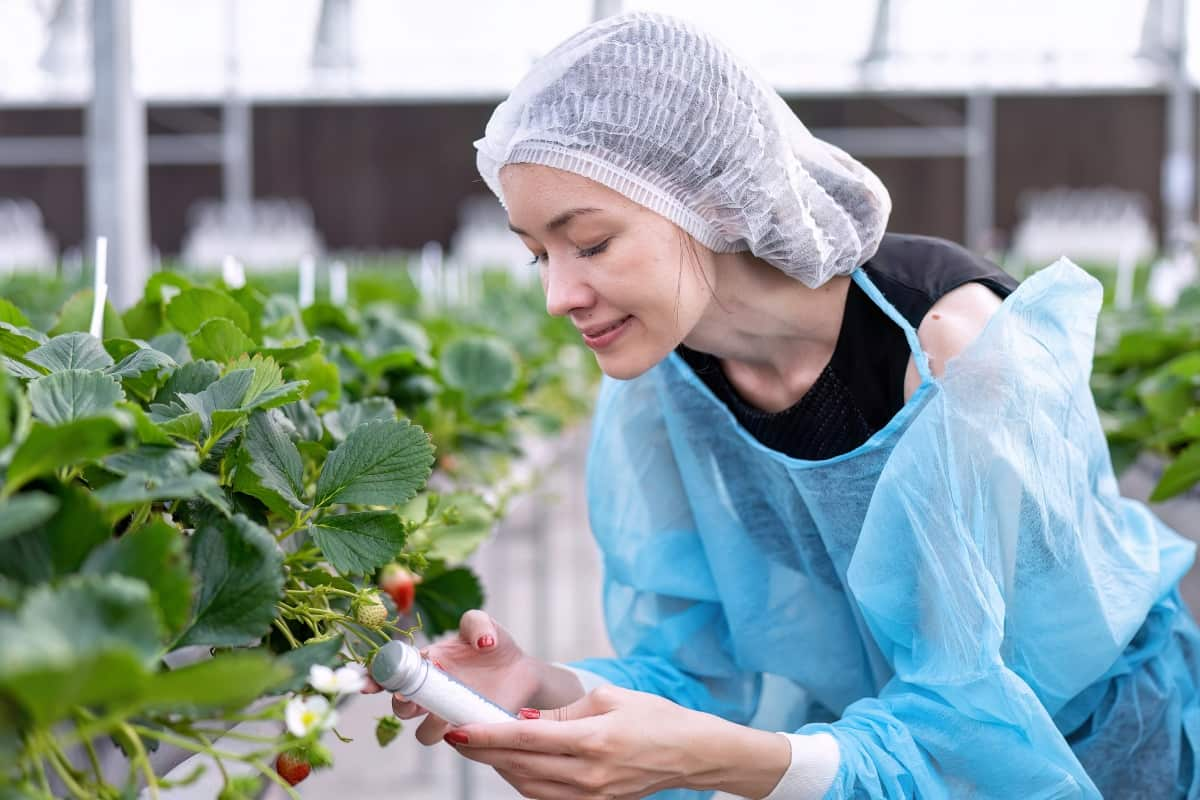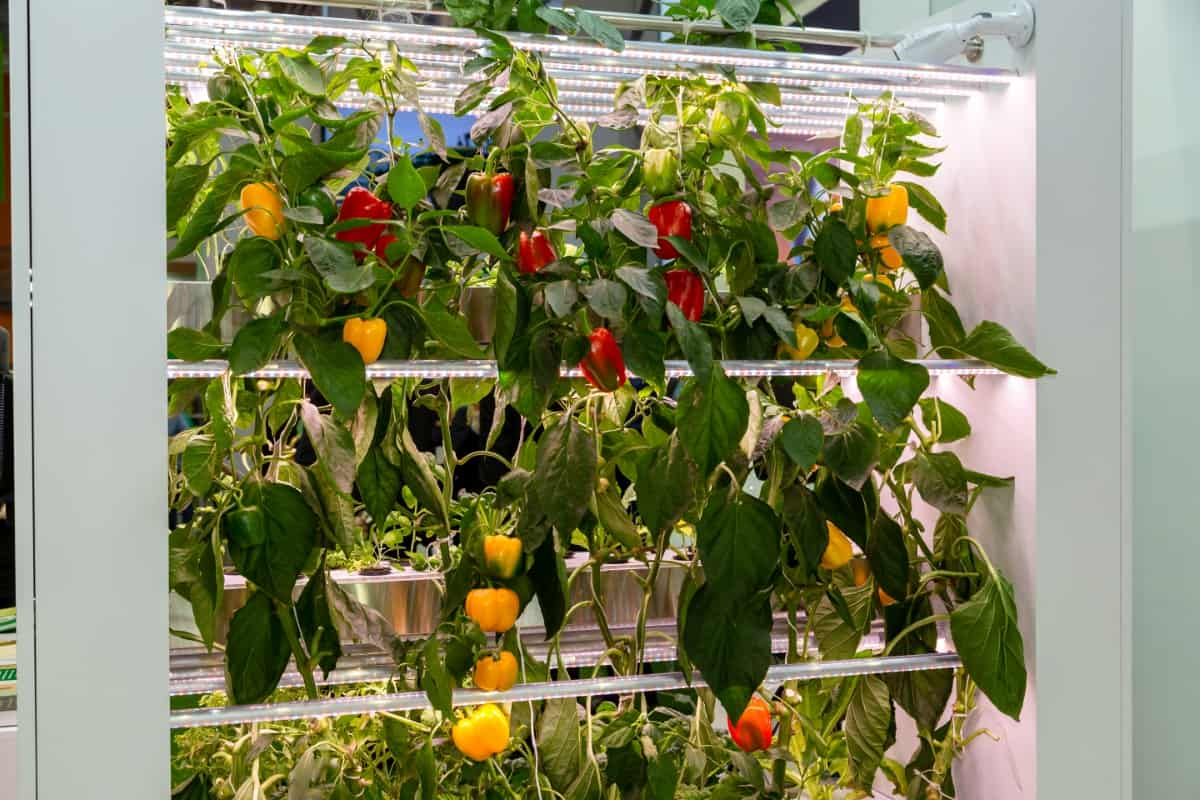Hydroponic farming has transformed the traditional way of growing plants, offering a novel method that ensures efficient growth and productivity. For those wondering how to grow hydroponics for beginners, a fundamental understanding of the essential equipment is imperative. A well-prepared hydroponic materials list is the cornerstone to kickstarting your journey in cultivating hydroponic plants.

From finding a reliable hydroponics equipment supplier to exploring various hydroponic equipment for sale, many tools and devices are integral to setting up a flourishing hydroponic system. This essential equipment addresses every need for hydroponics, ensuring that the plants thrive in a well-optimized environment.
Hydroponic Farming Equipment
Hydroponic Grow Lights: Choosing the Right Lighting System for Optimal Plant Growth
Grow lights are crucial in hydroponic farming, replicating the natural sunlight that plants require for photosynthesis. Different plants have unique light needs, and choosing the right type of light is essential for optimal growth. LED lights, fluorescent lights, and HID lights are among the various options available.
LED lights are energy-efficient and long-lasting, making them a prevalent choice among hydroponic growers. Fluorescent lights are suitable for plants that don’t require intense light, and HID lights are beneficial for larger growing spaces. Ensuring that your plants receive adequate light improves their health and productivity, making selecting appropriate grow lights a critical step in hydroponic farming.
Nutrient Solutions and Fertilizers
In hydroponics, the absence of soil necessitates the use of nutrient-rich solutions to feed the plants. These solutions contain essential minerals and vitamins that plants typically obtain from the soil. Choosing nutrient solutions and fertilizers is vital in providing the plants with the necessary nutrients for growth and development. Liquid and powder forms of fertilizers are available, and these should be mixed with water in accurate proportions to avoid over-fertilization.
Hydroponic Systems: Exploring Different Types and Configurations for Efficient Plant Cultivation
Several hydroponic systems are tailored to suit the varied needs of different plants. Systems like the Nutrient Film Technique (NFT), Deep Water Culture (DWC), and Aeroponics are popular among hydroponic farmers. Each system has its unique setup, but they all aim for efficient water and nutrient usage. NFT uses a thin film of nutrient-rich water flowing over the roots, while DWC allows the roots to hang in a nutrient solution. Choosing the right system based on the type of plants and the available resources is essential for a thriving hydroponic garden.
Grow Tents and Greenhouses: Creating Controlled Environments for Hydroponic Farming
Grow tents and greenhouses create controlled environments conducive to plant growth. They allow for managing temperature, humidity, and light, creating an ideal condition for plants to thrive. Grow tents are suitable for smaller indoor setups and are highly reflective, maximizing the effect of the grow lights. On the other hand, greenhouses are larger and harness natural light effectively, making them suitable for larger-scale hydroponic farming.
In case you missed it: How to Choose the Right Plants for Vertical Hydroponics

Water Pumps and Irrigation Systems: Ensuring Adequate Water Supply and Distribution in Hydroponics
Water pumps and irrigation systems are pivotal in ensuring the plants receive an adequate water supply. These systems are responsible for the consistent flow and distribution of nutrient-rich water to the plants’ roots. Various types of water pumps, like submersible pumps and inline pumps, are available based on the specific needs of the hydroponic system. A well-designed irrigation system ensures the water is evenly distributed, preventing dry spots or over-watering. The efficiency of these systems is essential for maintaining the health and vigor of the hydroponic plants.
pH and EC Meters: Monitoring and Adjusting Nutrient Solution Parameters for Healthy Plant Growth
Monitoring the pH and EC (Electrical Conductivity) of the nutrient solutions is essential to maintain the balance required for plant growth. pH meters help measure the solution’s acidity or alkalinity, ensuring it’s within the optimal range for the plants. EC meters measure the salt concentration, helping to adjust the nutrient levels. These meters are crucial for making necessary adjustments and ensuring the plants receive the right nutrients. Regular monitoring and adjustment based on the readings from these meters contribute to healthy and robust plant growth.
Air Circulation and Ventilation: Maintaining Optimal Air Quality and Temperature in Hydroponic Setups
Adequate air circulation and ventilation are crucial in maintaining the right temperature and air quality within the hydroponic setups. Fans and vent systems help keep the air fresh and prevent mold buildup and other pathogens. Ensuring that the plants receive fresh air rich in carbon dioxide is essential for photosynthesis. Proper ventilation also helps regulate temperature, preventing the environment from becoming too hot or cold. These aspects of air management are key contributors to creating a conducive atmosphere for the thriving growth of hydroponic plants.
Growing Media: Choosing the Right Substrate for Root Support and Nutrient Absorption in Hydroponics
Selecting an appropriate growing media is a pivotal aspect of hydroponic farming. This substrate, though soilless, supports the plant’s roots, ensuring stability and adequate nutrient absorption. Various options like coconut coir, perlite, and vermiculite are popular, each offering unique benefits.
The growing media must be porous for good air and water retention, facilitating the healthy growth of roots and efficient nutrient uptake by the plants. A carefully chosen growing media not only supports the plants but also contributes significantly to the overall success of the hydroponic system.
CO2 Generators and Controllers: Enhancing Photosynthesis Rates in Hydroponic Farms
CO2 generators and controllers are essential tools for optimizing the environment in hydroponic setups and enhancing the photosynthesis rates of plants. An ample supply of carbon dioxide significantly improves plant growth and productivity. CO2 generators help maintain an ideal level of carbon dioxide in the atmosphere of the growing area, while controllers allow for the monitoring and adjustment of CO2 levels.
In case you missed it: How to Choose the Right Hydroponic Grow Light for Plants

These equipment pieces ensure that plants have a consistent and adequate supply of CO2, essential for their growth and development, thus boosting overall productivity in hydroponic farms.
Propagation Tools: Seedling Trays, Cloning Machines, and Germination Kits for Starting Plants in Hydroponics
Propagation tools are foundational in starting plants in hydroponics, ensuring that they begin their growth cycle in a supportive environment. Seedling trays provide a structured space where seeds can initiate growth while cloning machines facilitate the multiplication of plants through cuttings. Germination kits are integrated solutions that provide a conducive environment for seeds to sprout. These tools are instrumental in giving plants a strong start, ensuring they develop robust root systems and healthy foliage as they mature, making them indispensable in hydroponic cultivation.
Frequently Asked Questions (FAQ) on Hydroponic Farming Equipment
What do I Need to Start Hydroponics?
You need essential equipment such as grow lights, water pumps, and a nutrient solution to start hydroponics. Additionally, choosing a suitable hydroponic system and growing medium is vital for successful plant cultivation.
What is the Equipment Used in Hydroponics?
The equipment used in hydroponics includes grow lights, hydroponic systems, growing media, and water pumps. Tools for monitoring pH and EC levels and proper ventilation systems are also integral for efficient hydroponic farming.
What is the First Step in Hydroponics?
The first step in hydroponics is planning, where you decide what plants to grow and choose a suitable hydroponic system and growing medium. Subsequently, ensuring you have all the necessary equipment and materials is essential for starting.
In case you missed it: The Best Herbs to Grow Hydroponically: List to Grow Indoors

Conclusion
A well-planned approach with the right equipment is essential for a thriving hydroponic garden. Choosing suitable systems, proper lighting, and correct growing mediums are foundational to a successful hydroponic farming journey.
- Feed Your Flock for Less: Top 10 Tips to Save on Chicken Feed
- Ultimate Guide to Ossabaw Island Hog: Breeding, Raising, Diet, and Care
- Hatching Answers: The Top 10 Reasons Your Chickens Aren’t Laying Eggs
- Eggs and Economics: Breaking Down the Cost of Raising Backyard Chickens
- Defend Your Greens: Proven Methods to Keep Iguanas Out of Your Garden
- Ultimate Guide to Cinnamon Queen Chicken: A Comprehensive Guide for Beginners
- Ultimate Guide to California Tan Chicken: Breeding, Raising, Diet, Egg-Production and Care
- Ultimate Guide to Marsh Daisy Chicken: Breeding, Raising, Diet, and Care
- 10 Types of Chicken Farming Businesses You Can Start for Profits